
- The Architectural Marvel of The Sagrada Familia: A Symbol of Barcelona
- 7 Fascinating Facts About The Sagrada Familia's Design and History
- The Sagrada Familia: A Masterpiece by Antoni Gaudí
- Exploring the Spiritual Significance of The Sagrada Familia
- The Construction Timeline of The Sagrada Familia: Past, Present, and Future
- Visiting The Sagrada Familia: Tips for an Unforgettable Experience
The Sagrada Familia, designed by the visionary architect Antoni Gaudí, stands as a symbol of Barcelona's rich cultural heritage and architectural innovation. This breathtaking basilica has captivated millions of visitors with its unique blend of Gothic and Art Nouveau styles, making it one of the most recognizable landmarks in the world.
In this article, we will explore **The Sagrada Familia: Barcelona's Remarkable Landmark – 7 Fascinating Facts** that highlight the extraordinary features and history of this unfinished masterpiece. From its intricate facades to its pioneering engineering techniques, discover why the Sagrada Familia continues to inspire awe and admiration across generations.
The Architectural Marvel of The Sagrada Familia: A Symbol of Barcelona
The Sagrada Familia is not just a church; it represents a **harmonious blend of nature and architecture**. Gaudí’s vision was to create a structure that mimicked the forms found in nature, resulting in a building that feels alive. The use of organic shapes and colors, along with innovative materials, makes it a true architectural marvel, earning a rightful place among the masterpieces of human creativity.
One of the most remarkable aspects of the Sagrada Familia is its **complex geometry**. Gaudí employed hyperboloids, paraboloids, and ruled surfaces, which were groundbreaking at the time. This unique approach not only enhances the building's aesthetic appeal but also contributes to its structural integrity. The intricate details can be seen in various elements, such as the columns that resemble tree trunks, supporting the basilica's lofty ceilings.
As a **symbol of hope and perseverance**, the Sagrada Familia has been under construction since 1882. Despite various challenges, the building continues to evolve. Its anticipated completion date is set for 2026, marking the centenary of Gaudí's death. This long-term project reflects the dedication of artisans and architects who strive to fulfill Gaudí's original vision, making the Sagrada Familia a testament to enduring creativity.
In addition to its architectural significance, the Sagrada Familia plays an essential role in the cultural landscape of Barcelona. It attracts millions of visitors each year, contributing to the local economy and inspiring countless artists. The basilica serves as a reminder of the city's history and its commitment to **artistic excellence**. Here are some additional features that make this landmark unique:
- Integration of religious symbolism in every aspect of design
- Use of light to create a spiritual atmosphere inside the basilica
- Construction funded entirely by private donations
- Recognition as a UNESCO World Heritage Site in 2005
7 Fascinating Facts About The Sagrada Familia's Design and History
One fascinating aspect of the Sagrada Familia's design is its **inspired use of nature**. Gaudí believed that architecture should emulate the natural world, which is evident in the basilica's columns shaped like tree trunks, branching out to support the ceiling. This organic approach not only enhances the beauty of the structure but also creates a unique atmosphere that draws visitors into a space that feels alive and interconnected with the environment.
Another remarkable feature is the **colorful stained glass** that adorns the interior. Gaudí meticulously planned the placement of these windows to maximize the interaction of light and color throughout the day. As sunlight filters through the glass, it casts vibrant hues onto the stone surfaces, transforming the interior into a kaleidoscope of colors that reflect the changing atmosphere outside.
In addition to its stunning beauty, the Sagrada Familia is a **testament to innovation**. Gaudí utilized techniques that were ahead of his time, such as catenary arches and a self-supporting structure that reduces the need for external scaffolding. These groundbreaking methods not only contribute to the building's stability but also showcase Gaudí's forward-thinking approach to architectural design, earning him a place as one of the most influential architects in history.
Lastly, the Sagrada Familia's construction has been a **collaborative effort** involving thousands of artisans and workers over the decades. Each generation has added its own touch to the basilica, ensuring that Gaudí's vision evolves while remaining true to its roots. This ongoing dedication to craftsmanship highlights the cultural significance of the Sagrada Familia, making it not only a landmark of architectural excellence but also a symbol of collective human effort and creativity.
The Sagrada Familia: A Masterpiece by Antoni Gaudí
The Sagrada Familia, a masterpiece by Antoni Gaudí, is renowned for its innovative architectural techniques that blend art and engineering. Gaudí's use of natural forms not only enhances its beauty but also ensures structural stability. The basilica's design reflects the complexities of nature, making it a unique representation of human creativity and perseverance.
This iconic building features several distinct elements that showcase Gaudí's genius. Some of the notable aspects include:
- Spiral Towers: Each of the 18 towers represents a different biblical figure, with the tallest symbolizing Jesus Christ.
- Intricate Facades: The Nativity and Passion facades tell the story of Christ's birth and resurrection through detailed sculptures.
- Natural Lighting: The basilica is designed to use sunlight as a key element, creating an ethereal atmosphere within.
Gaudí's dedication to this project is evident in every detail, reflecting his belief that architecture should serve a higher purpose. The Sagrada Familia not only stands as a place of worship but also as a symbol of the artistic spirit of Barcelona. Its ongoing construction, funded by private donations, illustrates the collective commitment to completing Gaudí's vision, making it a living testament to creativity and faith.
As visitors explore this architectural wonder, they are often struck by the profound connection between the structure and the surrounding environment. Gaudí's integration of natural elements invites contemplation and reverence, reinforcing the Sagrada Familia's role as a sacred space. Its impact on both architecture and spiritual experience continues to inspire admiration worldwide.
Exploring the Spiritual Significance of The Sagrada Familia
The Sagrada Familia is not merely an architectural wonder; it embodies profound spiritual significance for many. Gaudí envisioned the basilica as a symbol of the Christian faith, integrating various religious elements within its design. Each facade and sculpture tells a story from the Bible, inviting visitors to engage with the narratives of faith while experiencing the sacred atmosphere of the space.
One of the most striking features of the Sagrada Familia is its use of light. Gaudí strategically designed the windows to manipulate natural light, creating a dynamic interplay of colors that evoke different moods throughout the day. This intentional play of light not only enhances the aesthetic beauty of the interior but also serves as a metaphor for divine presence, encouraging a sense of reflection and connection with the spiritual.
The basilica’s towering spires, reaching for the heavens, symbolize a bridge between the earthly and the divine. Each of the 18 spires is designed to represent significant biblical figures, culminating in the tallest spire dedicated to Jesus Christ. This verticality is a reminder of the aspirational journey of faith, urging visitors to look upward and contemplate their own spiritual paths.
Moreover, the ongoing construction of the Sagrada Familia stands as a testament to perseverance and faith. Over the years, countless artisans and volunteers have contributed their efforts to bring Gaudí's vision to life. The collaborative nature of the project reflects a community's dedication not only to the architectural endeavor but also to the shared belief in the basilica's spiritual mission, making it a living monument of hope and devotion.
The Construction Timeline of The Sagrada Familia: Past, Present, and Future
The construction timeline of The Sagrada Familia reflects a remarkable journey that began in 1882. Initially, the project was designed by Francisco de Paula del Villar, but it was soon taken over by Antoni Gaudí, who transformed the original plans into a stunning masterpiece. Gaudí dedicated most of his life to this project, believing deeply in its spiritual significance, which set the foundation for its evolving construction over the decades.
Throughout the 20th century, the Sagrada Familia faced numerous challenges, including the Spanish Civil War, which halted construction for several years. Despite these setbacks, the vision remained alive, with various architects and artisans continuing Gaudí's work. The project adopted innovative techniques and modern technologies, allowing for progress that aligned with Gaudí's original designs while adapting to contemporary demands.
In recent years, the construction has gained momentum, with advancements in technology enabling more efficient building methods. Today, the anticipated completion date is set for 2026, coinciding with the centenary of Gaudí's death. This date symbolizes not just the completion of the basilica but also the enduring legacy of Gaudí’s architectural brilliance and the dedicated efforts of all who contributed to its realization.
Looking to the future, the Sagrada Familia is expected to stand not only as a remarkable architectural feat but also as a living monument of faith and creativity. The ongoing construction will further enhance its status as a UNESCO World Heritage Site, drawing visitors from around the world who are eager to witness this extraordinary blend of history, artistry, and spirituality. The dedication to completing the Sagrada Familia serves as a reminder of the community's commitment to preserving Gaudí's vision for future generations.
Visiting The Sagrada Familia: Tips for an Unforgettable Experience
Visiting the Sagrada Familia is an experience like no other, and to make the most of your time, consider planning your visit strategically. **Buy tickets in advance** to avoid long queues, especially during peak tourist seasons. Booking online not only saves time but often includes options for guided tours, which can provide deeper insights into Gaudí's vision and the basilica's intricate details.
When it comes to timing, consider visiting early in the morning or later in the afternoon. The **morning light** creates a magical atmosphere inside as sunlight streams through the colorful stained glass, enhancing the spiritual ambiance. Additionally, exploring at these quieter times allows for a more contemplative experience, giving you space to appreciate the artistry and significance of this architectural marvel.
Don't forget to allocate time to explore the **surrounding area**, including the beautiful gardens and squares nearby. The park adjacent to the Sagrada Familia offers stunning views of the basilica from different angles, and you can also enjoy the local cafes and shops that reflect the vibrant culture of Barcelona. Engaging with the local scene can enrich your visit and provide a more holistic experience of this iconic landmark.
Lastly, consider joining a guided tour to gain insights into the **historical context** and artistic techniques that make the Sagrada Familia unique. Knowledgeable guides can share fascinating anecdotes and details about Gaudí's life and the ongoing construction, helping you connect with the basilica on a deeper level. This layered understanding will transform your visit from mere sightseeing into a profound encounter with a masterpiece of human creativity.
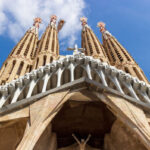 The Ultimate Guide to Sagrada Familia in Barcelona: Key Information and Tips
The Ultimate Guide to Sagrada Familia in Barcelona: Key Information and Tips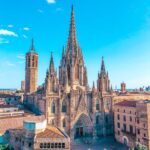 Cathedral of Barcelona: Gothic Quarter Landmark
Cathedral of Barcelona: Gothic Quarter Landmark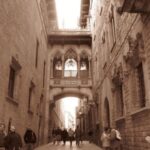 Head from the waterfront to the Gothic Quarter.
Head from the waterfront to the Gothic Quarter.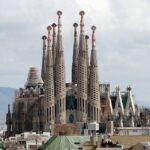 The Enigmatic Charm of Sagrada Familia: A Central Gem in Barcelona
The Enigmatic Charm of Sagrada Familia: A Central Gem in BarcelonaIf you want to know other articles similar to The Sagrada Familia: Barcelona's Remarkable Landmark – 7 Fascinating Facts you can visit the category WHERE YOU CAN GO.
Deja una respuesta

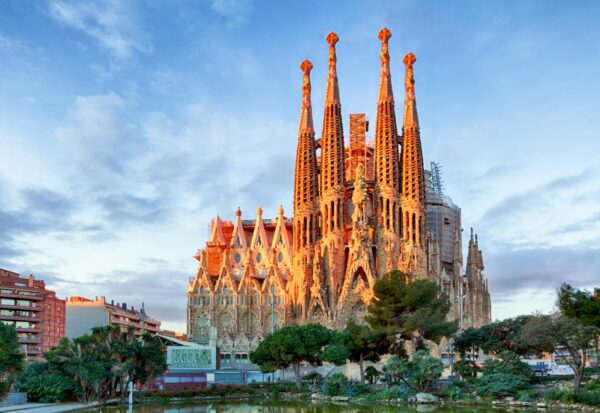








Read more!